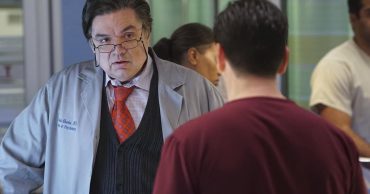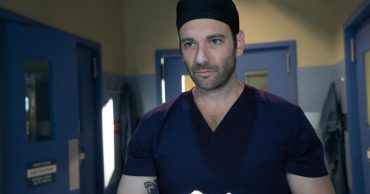
If you ask any medical professional, they’ll likely tell you that strange things tend to happen on the night shift. Of course there’s the standard injuries caused by nothing short of foolish behavior, but occasionally there are curveball cases you can’t make up. That is, unless you’re a television writer who ventures into the strange and unexpected. Something about the night also opens up many emotional doors for people. This is how many of the Chicago Med doctors come out of this particular graveyard shift with a better understanding of themselves. You can’t really recognize what’s strange until you compare it to your own normal.
Halstead treats not one, not two, but three patients showing symptoms of heavy drug use. The problem is that after the toxicology screening, Halstead is confused that none of the patients actually have drugs in their system. Most likely caused by a makeshift cocktail of drugs, Halstead and Clarke can’t stop the patients from going into organ failure. You’d think losing kids would be the most horrible part of the case, but no. It’s the horrible resident who shows up to his shift drunk and compromises the safety of his already dying patients. Instead of seeing an irresponsible drunk, Halstead sees the emotional toll working in the ER can have on a physician. Halstead determines that early intervention and counseling is the best policy here.
Dr. Charles took on an interesting new task diagnosing Dr. Latham. As suspected by everyone, whether they said it aloud or not, Dr. Latham exhibits all the signs and symptoms of being on the Autism Spectrum. It makes sense since Latham is brilliant, but has often been unable to recognize and adapt to social and emotional cues. Latham is happy to finally have a concrete answer for the questions which have plagued his life. If only Reese would be as receptive to Dr. Charles’s counsel. Reese has been popping those caffeine pills like they’re M&M’s so she can be 100% committed to her patient 100% of the time. That kind of behavior is impossible to keep up long term without proper rest. Constantly being called to call time of death of multiple patients doesn’t help.
One of those patients is Dr. Latham’s because the nurses didn’t want him to upset a grieving family. Just because Dr. Latham can’t express himself the way other people do, doesn’t mean he doesn’t have feelings or feel distress himself. The thought of not being able to perform a basic function of his job is very distressing to him, so he asks Dr. Charles to help him get into a study for TMS. This is a new therapy which would, hypothetically, give Latham immediate recognition of emotional cues. The first treatment works well, but time will tell. As for Reese, she just needs therapy herself to deal with the stress. For tonight, ‘physician heal thyself’ actually works for Dr. Charles. The person he makes the most progress with is himself and his daughter. He gave Robyn time and space, and that was enough to naturally heal the rift between them.
Dr. Chin and Ms. Goodwin secretly work around everyone on the graveyard shift to sneak in a VIP patient. What kind of patient requires a Embassy diplomat and zoo workers? Dr. Chin and Ms. Goodwin call in Dr. Rhodes to perform heart surgery on…a Panda! We must do all we can to save our endangered species, right? With less then 2,000 pandas left in the world, Rhodes agrees to do what he can to save the lovable animal. It’s also a great PR opportunity for the hospital, barring any complications during surgery. After a few scares, the panda makes it. It’s a reminder in the midst of all the violence, that we should do everything to protect our planet’s most precious, innocent creatures.
Does the exhaustion of the night shift have some sort of magical power over everyone’s consciousness? More self-awareness for people who handle life and death everyday couldn’t hurt.
 Follow Us
Follow Us






Visitor Rating: 3 Stars